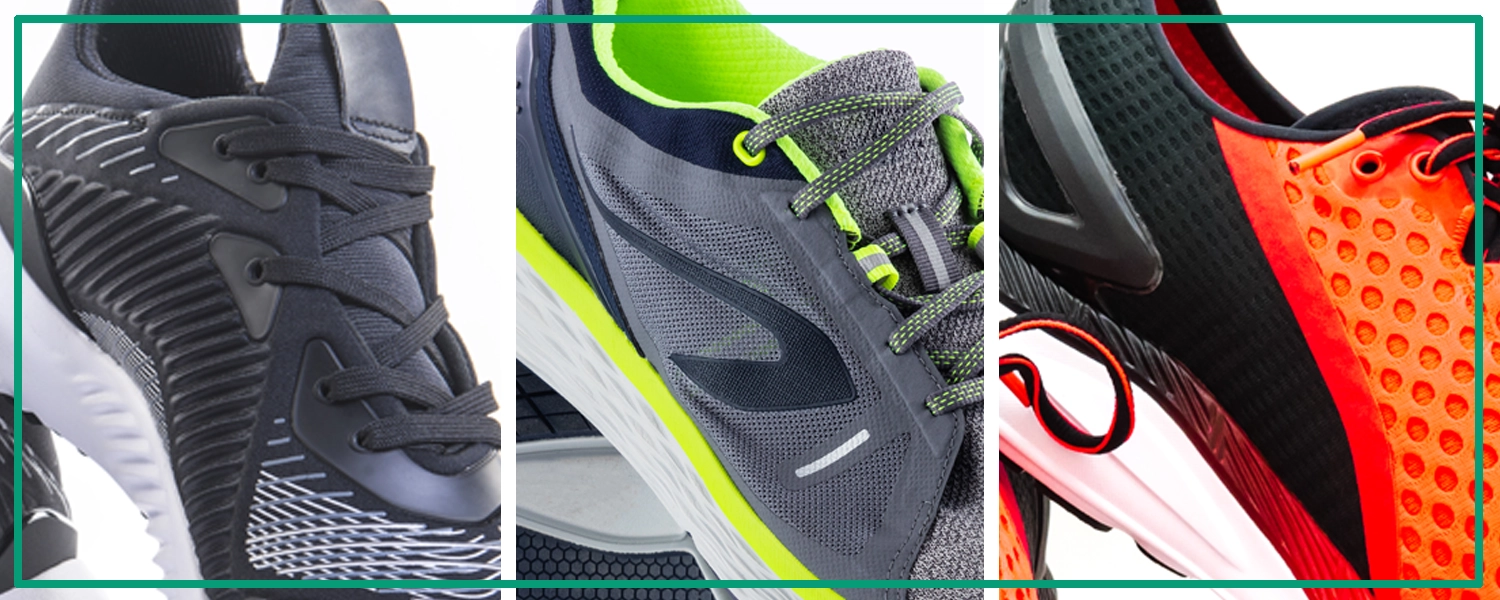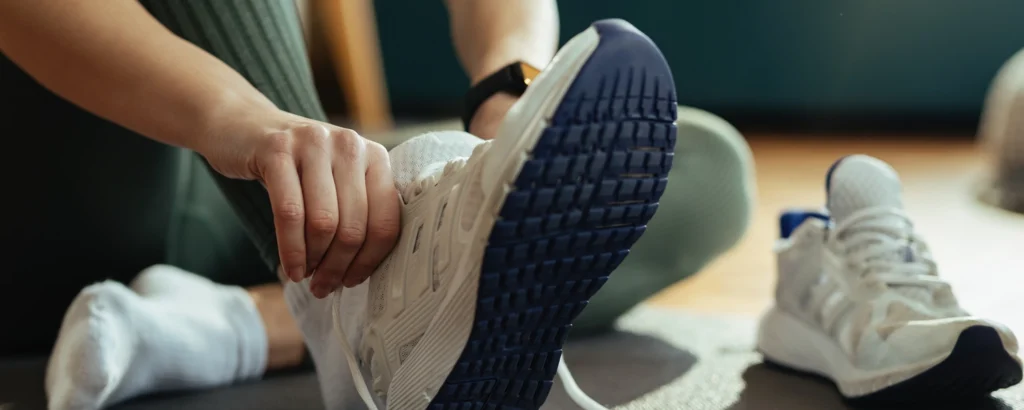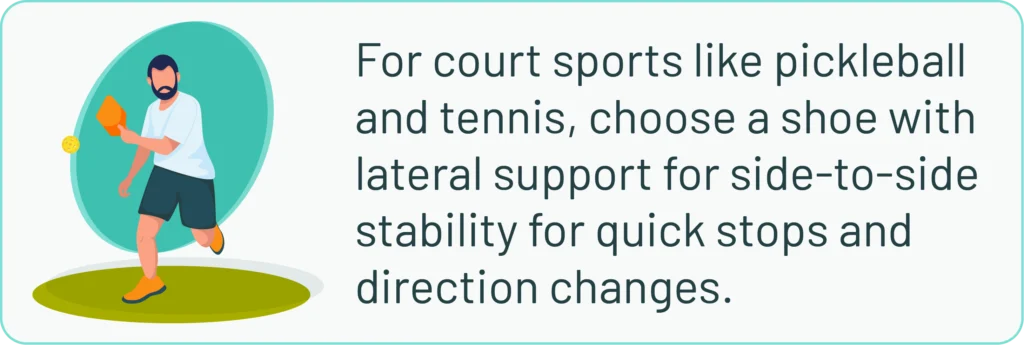Choosing the Right Shoe

We all want comfort, support, and a little style, but choosing the right shoe really starts with understanding your feet and what you do with them.
At Upperline, we believe your shoes are partners, not just gear. A good pair gives support, freedom, and confidence—whether you’re strolling on the weekend, logging miles in training, or firing shots on the court. Selecting a shoe if often looked at as a mundane task but it is critical to find the shoe that matches what one has in mind to use the shoe for. More to follow on selecting shoes for certain activities.
Foot and Ankle Conditions that Influence Your Shoe Choice
Before diving into shoes, let’s review some common foot or ankle conditions that might affect your choice. Even if your issues are mild, the right shoe can make a world of difference. You may have one of the following conditions that may affect your feet:
- Overpronation or supination – That’s your foot rolling too far inward or outward when you walk or run. You’ll want shoes with appropriate support or cushioning to correct your gait.
- Plantar fasciitis – Heel pain from inflammation of the plantar fascia. Good arch support and cushioned heels can help ease the stress.
- Bunions or hammertoes – These structural issues need shoes with a roomy toe box, so your toes aren’t crammed or rubbing against seams.
- Flat feet or high arches – Flat feet usually benefit from stability or motion-control shoes, while high arches need extra cushioning to absorb shock.
- Achilles tendon issues or tight calves – A shoe with a slightly higher heel drop or a rocker bottom can reduce strain on the back of your heel and tendon.
Top 5 Reasons to Pick the Right Shoe
- Injury Prevention
Wearing a supportive, well-fitting shoe helps reduce the risk of sprains, tendonitis, and stress fractures. It’s especially important whether you’re casually walking, running, or quickly pivoting in a pickleball match. - Pain Relief & Comfort
If you’re on your feet a lot—or dealing with plantar fasciitis, bunions, or arthritis—choosing the right shoe can dramatically reduce daily aches. A cushioned but supportive shoe helps disperse pressure, keeping you comfy all day. - Performance Boost
Walking, running, or playing sports like tennis or pickleball require different types of stability and support, traction, and flexibility. The right shoe enhances movement efficiency and responsiveness, so you’re not fighting against your footwear. - Posture & Alignment
Shoes that support your arches, properly cradle your heels, and match your foot mechanics can improve how you stand, walk, or run—less strain up the chain to your knees, hips, and even lower back. - Long-Term Foot Health
Consistently wearing shoes that match your foot type and activity helps preserve joint health, maintain proper gait, and reduce wear-and-tear on your feet as you age.

The Importance of an In-Person Evaluation with a Podiatric Physician
Even though online guides and self-assessments are helpful, seeing a trained Podiatric Physician in person makes a big difference:
- Accurately Assess Your Foot Structure & Gait
In-person evaluations include watching how you walk or run, measuring arch height, mobility, length, width, and more. That helps ensure your shoes offer the precise support you need. - Identify Hidden or Developing Issues
Some conditions—like early bunions, stress fractures, or tendon imbalance—may not be painful yet. Catching these early means choosing shoes that support and protect, not exacerbate. - Personalized Recommendations
Everyone’s feet are unique. That custom fit, whether it’s a specific width, modified insole, or subtle orthotic, is best determined face-to-face with a trained specialist. - Check Shoe Fit with Real-Time Feedback
During an evaluation, you can try on and test different shoes to see how they feel. You can walk, pivot, go on your toes to get a real sense before you commit. - Adjust Over Time
Feet change over time—weight shifts, activity levels evolve, or minor structural changes happen. During follow-up appointments, Upperline Podiatric Physicians give recommendations, so you stay comfortable, injury-free, and active.
Matching the Right Shoe to Your Activity!!!
Not all shoes are created equal—and that’s a good thing! This can not be overstated. Many people buy shoes for the name, the look or general feel but it is critical that they are designed for the activity you have in mind. Here’s a breakdown by activity:
CASUAL
For casual walking—think errands, the daily commute.
Walking involves heel-to-toe transition, so shoes that encourage smooth roll-through without being stiff are ideal.
Look for shoes with:
- Moderate cushioning
- Flexible but supportive soles
- A good toe box and stable heel
- Lightweight construction so your feet don’t get tired
RUNNING
Match the shoe drop (difference in height between heel and toe) to your running form—lower drop for mid/forefoot strikers, moderate drop for heel strikers.
Running shoes need more:
- Excellent shock absorption
- Stable mid-sole design matching your gait (support for pronators, more cushion for neutral runners)
- Breathable upper for hot runs
- Durable outsole for frequent impact
SPORTS
Court sports like pickleball or tennis are all about short bursts, lateral movement, and quick pivots.
Your shoe should include:
- Lateral support for side-to-side stability
- Durable outsole with appropriate traction pattern (herringbone, for example)
- Reinforced upper to handle quick stops and direction changes
- Cushioning that’s responsive, but not too soft, or you’ll lose some control

Putting It All Together: A Shoe Fitting for an Upperline Patient
Let’s take Alex. He enjoys walking, light jogging, and weekly pickleball with friends. At his in-person evaluation, I would:
- Watch him walk and jog,
- Check his foot alignment, arch height, and calf flexibility,
- Ask about any heel, knee, or calve aches and his activity schedule,
- Recommend three shoes:
- A daily walking shoe with flexible cushioning and wide toe box
- A running shoe geared toward moderate support and breathability, depending on his gait.
- A court shoe (pickleball/tennis) providing lateral stability and responsive cushioning.
He would try each one—walk, jog, simulate side-to-side pivoting—so he feels confident before buying.
A Few Quick Fit Tips When Choosing Your Shoe Options
TRY
shoes later in the day when your feet are more swollen, so the fit is more realistic
WEAR
the socks you’ll use for that activity,
ENSURE
there’s about a thumb’s width (½ inch) of space between your longest toe and the front, even if you are an adult!
MAKE SURE
your heel fits snugly without slipping but not feel squeezed,
DO
a quick walk. If your foot lifts off or slides forward, it’s not a good hold,
FEEL
for pressure points—under the arch, during gait, or over bunions.
Final Thoughts – Why It Matters
Getting the right shoe based on your feet, your specific activities, and your body mechanics does more than keep things comfy. It protects you against injury, eases existing conditions, and keeps your feet, ankles, and lower body healthy for years to come.
If you’re unsure about your foot mechanics or if things feel off in your current shoes, book an in-person evaluation at one of our convenient Upperline clinics. A little insight and the right fit can make a huge difference—not just in how you move, but in how you feel every single step.
Stay light on your feet and let your shoes be the helpers, not the hurdles.
About the Author

Dr. Michael King is the Chief Medical Officer of Upperline Health in Nashville, TN.
Dr. King maintained a limb salvage practice in Fall River, MA for many years. He attended Kent State University College of Podiatric Medicine where he obtained his Doctor of Podiatric Medicine (DPM) degree in 1983. He completed his Podiatric surgical residency at Toledo Riverside Hospital in Toledo, OH. He is board certified by the American Board of Foot & Ankle Surgeons and is a Fellow of the American College of Foot & Ankle Surgeons. He is a past president of the American Podiatric Medical Association. Dr. King also gives back to his profession by serving as an adjunct clinical faculty as well as Vice-chair of the Kent State University College of Podiatric Medicine.




